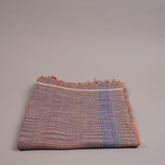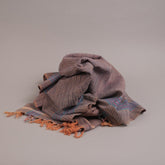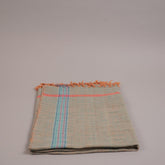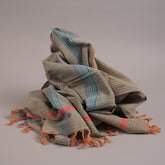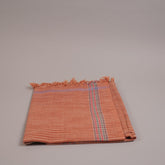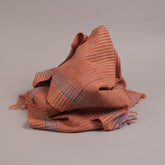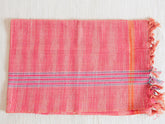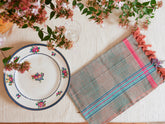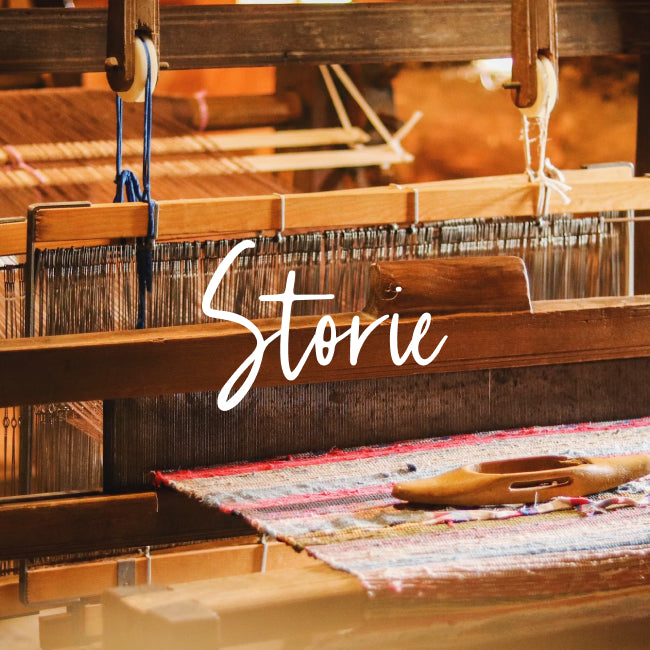Important things to think about in the production process.
There are so many things to consider when putting together a textile collection, especially if you are working to make the products sustainable and ethical. Each fibre needs to be looked at for its values and cost (we’re talking about the environmental and social cost ) of production, but also the value of the material for our clients - including how that material will age.
Is it beautiful, how does it feel touch, to wear, how does it wash - is there potentially anything harmful in that fabric for the user or for the environment, can I repair it, can I recycle it?
We’ve always championed natural fibres like wool, cotton and silk not because we are trying to tick boxes, or use it for marketing purposes - simply because it makes sense on so many levels, and because natural materials are lovely. However, it’s also important to think about how those natural materials are made.

Most industrial textiles (including natural materials like cotton) go through chemical treatments which could be harmful, firstly in the environment in which they are made and for the people who make them. If run off, such as bleaching agents or other chemicals go into water sources, this has long reaching implications. It is also important to think about the longer term impact, how the textile might degrade - are there any harmful elements in it if it were to end up in landfill for example?
However, if one chooses hand woven natural textiles, these materials make very little negative impact in their creation. There is no chemical treatment of the raw material. The production uses very little water or electricity. It keeps important cultural traditions alive, while supporting small artisan businesses across the world.

Storie has been working with one fantastic khadi producer in the north of India since 2015. We asked Mr Maheshwari, why he had chosen to work in this traditional sector of the textile industry. For him, keeping textile traditions alive is key:
“ Firstly, hand loom was always the only type of textile we used at home. Each group of villages has its own speciality of textiles and artisans do not need to leave their village for employment: this is really important for the family. I specially choose this work as this was once one of the highest employment providers in India (after farming) but now it's on the verge of extinction.”
Mr Maheshwari specialises in unbleached cotton, which has not undergone the chemical process of bleaching, to whiten it. He tells us “Bleaching was never an Indian concept. In India we say for cotton textiles " more you use and wash it gets more cleaner"... these products are made to be used, and to last.
Unbleached cotton retains its natural colour, often in shades of cream, beige or with specks of beige colour in it. It is favoured for its minimal processing, the material isn’t exposed to potentially harmful chemicals such as chlorine dioxide, hydrogen peroxide, or optical brighteners, which are commonly used in the bleaching process. This treatment not only involves chemicals but also consumes significant amounts of water and energy. By opting for unbleached cotton, consumers reduce the environmental impact associated with conventional cotton production.

Another key benefit of unbleached cotton is that it is much softer for sensitive skin. This fibre is more durable and more likely to retain it’s natural strength and integrity better than chemically treated cloth; so it makes textiles that are more resistant to wear and tear, lasting longer than their bleached counterparts. Additionally, unbleached cotton tends to shrink less when washed, providing better dimensional stability over time.
Its texture may be less fine than its bleached counterparts, but textile lovers enjoy the unique tactile experience and understand that it is a material that has been woven to last a lifetime.
***********
If you have any specialist knowledge or information to share on this subject, do get in touch - thanks to our colleagues, clients and friends every day we learn a bit more about how to do things better.

Sources
OECD (2006), “Limits on Aromatic Amines in Textiles Coloured with Azo Dyes”, in Environmental Requirements and Market Access, OECD Publishing, Paris. DOI: https://doi.org/10.1787/9789264013742-6-en
Fiona Cameron interview with Mr D.Maheshwari October 2024
Image credits, Fiona Cameron for Storie and Janko Ferlic, Trisha Downing & Zahhor from Unsplash .


